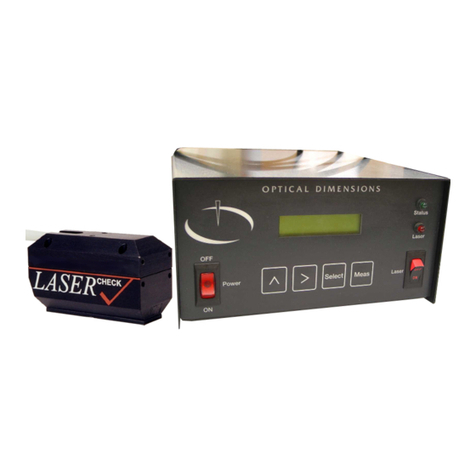
ii
Export ........................................................................................................................................... 15
A
UTOMATED
O
PERATION
.......................................................................................................................... 16
Numerous Continuous Measurements / Roll Grinding......................................................................... 16
Setting up Windows Software for External Inputs............................................................................ 16
Automatic Parameters for Automatic Start, Stop and Save Options................................................. 16
Individual Parts / Parts Inspection....................................................................................................... 18
Setting up Windows Software for External Inputs............................................................................ 18
Automatic Parameters for Automatic Start, Stop and Save Options................................................. 18
“Start” and “Stop” Sensor Wiring Inputs............................................................................................ 20
Triggering a measurement externally................................................................................................... 20
BEYOND THE BASICS ............................................................................................................................ 20
LASERCHECK ALIGNMENT PRINCIPLES AND PROCEDURES.................................................. 21
H
OW
D
OES
L
ASERCHECK
W
ORK
?............................................................................................................. 21
A
LIGNMENT
............................................................................................................................................... 22
Vertical ................................................................................................................................................. 22
Horizontal............................................................................................................................................. 23
Directional / Rotational........................................................................................................................ 23
M
EASURE
/H
EADTEST
D
IALOG
B
OX
........................................................................................................... 24
Measure/Headtest Screen A.................................................................................................................. 24
Measure/Headtest Screen B.................................................................................................................. 25
M
EASURE
/A
LIGN
D
IALOG
B
OX
................................................................................................................. 26
Horizontal Alignment with Measure/Headtest or Measure/Align ........................................................ 26
VERIFYING ALIGNMENT PROCEDURES ......................................................................................... 27
S
ET
H
EAD
C
LOSE
C
ORRECT
P
OSITION
....................................................................................................... 27
A
LIGN
H
ORIZONTALLY
.............................................................................................................................. 27
A
LIGN
V
ERTICALLY
................................................................................................................................... 27
V
ERIFY
A
LIGNMENT
.................................................................................................................................. 27
AIR KNIFE/SQUEEGEE ACCESSORIES ............................................................................................. 28
APPENDIX - SETUP FILES..................................................................................................................... 30
S
ETUP FILE FORMAT
................................................................................................................................... 30
FILENAME........................................................................................................................................... 30
START_INPUT ..................................................................................................................................... 30
RA_UNITS ............................................................................................................................................ 30
RA_THRESHOLD ................................................................................................................................ 30
CALIBRATION ..................................................................................................................................... 30
APPENDIX - CALIBRATION PROCEDURES ..................................................................................... 31
I
NSTRUCTIONS FOR USING THE
S
ETUP
F
ILE AND
C
ALIBRATION
T
EMPLATE
.
XLS
......................................... 31
Smooth and Rough Mode ..................................................................................................................... 31
Smooth Mode Measurements ........................................................................................................... 31
Rough Mode Measurements ............................................................................................................. 31
Calibration Spreadsheet....................................................................................................................... 31
Statistics and Accuracy......................................................................................................................... 32
Instructions for using the Setup File and Calibration Template.xls .................................................. 32
Step 1 Enter Ra Values................................................................................................................. 32
Stylus and Lasercheck Ra Values ............................................................................................. 33
Filename =................................................................................................................................ 34
Control =................................................................................................................................... 34
Units = ...................................................................................................................................... 34
Cal Type = ................................................................................................................................ 34





























